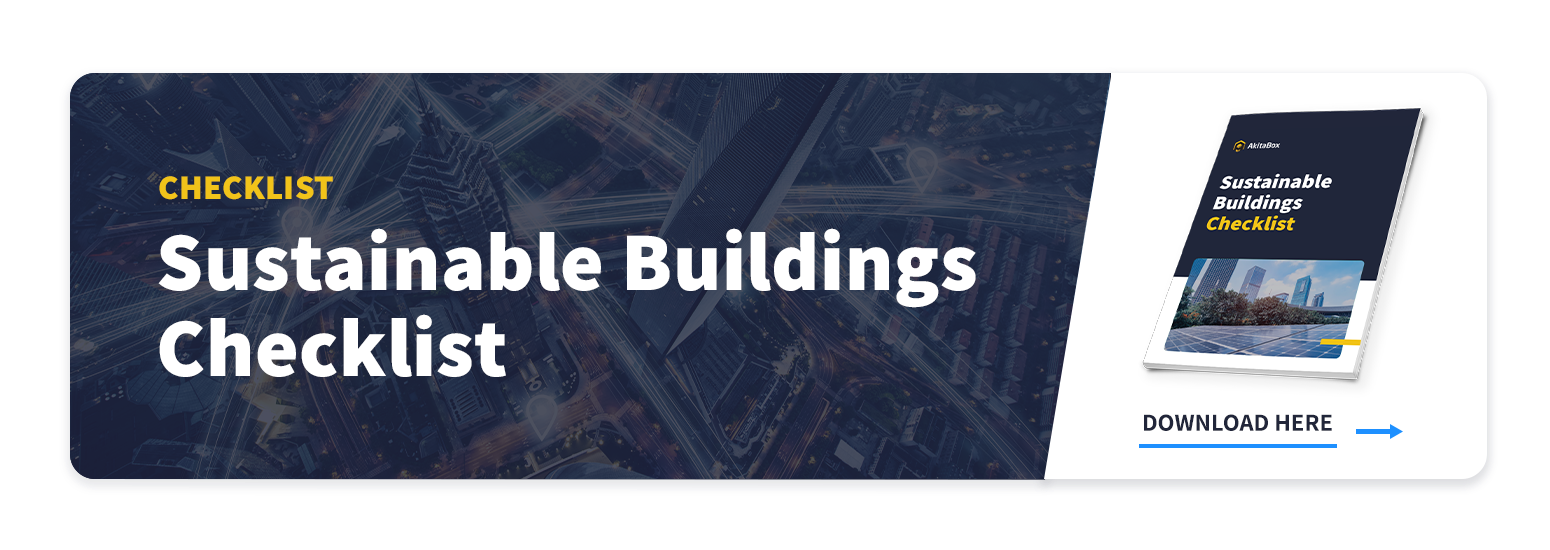We all want to be healthy. We know that giving our body nutritious meals and making an effort to be active each day will help us to feel physically and mentally better — to be healthier.
Buildings are no different. Over the last year there has been a renewed interest in healthy buildings. Achieving this building health also requires daily attention to how we manage and operate facilities.
What Are Healthy Buildings?
Healthy buildings is a relatively new area of interest for facilities management. It refers to the physical, psychological, and social health and well-being of occupants, visitors, and staff in buildings and the built environment.
In essence, healthy buildings are built environments that keep people safe, healthy, and happy. Despite all the benefits of being outside, humans have spent thousands of years making inside better. We are finally starting to measure and think about if that inside time is healthy for us.
The idea of healthy buildings has come into focus as the world has combated the COVID-19 pandemic. Air quality, filters, and air flow have become high priorities for facility teams as occupants and tenants began asking tough questions. These demands are not changing. Even as we emerge from pandemic times, the spotlight will continue to be on healthy buildings. Occupants want it. Tenants are adding it to their requirements. And facility teams need to be prepared to answer the call.
Challenges to Meeting Healthy Building Standards
If achieving healthy buildings were easy, we wouldn’t even need to write this blog. But many of these common challenges facility teams face on a daily basis are also blockers to healthy buildings:
- Deferred Maintenance – Building operators almost never get the budget they need to do everything in their facilities, leading to a backlog that grows substantially every year.
- Reactive Maintenance Cycle – For most teams, even with a preventive maintenance program in place they still find themselves in a very reactive state.
- Outdated Building Data – Building operators often have to make decisions with incomplete, siloed, or non-existent data which leads to poor decision making compounding other challenges.
- Aging Buildings – Older buildings require more maintenance, but without the budgets to support them it adds to the deferred maintenance and reactive cycle.
All of these challenges impact building health. When facilities are properly funded, are on a preventive maintenance program, and have accurate data, teams can conduct better maintenance, which creates healthier and safer spaces.
Rethink Your Building Operations
Achieving healthier buildings doesn’t take a herculean effort. At its most basic level, achieving healthy buildings requires you to honestly evaluate your buildings and assets, put a plan in place, measure success, communicate with occupants, and reassess.

Focusing on healthy buildings can help you meet green initiatives at the same time. As you upgrade your old assets, optimize operation schedules, and redesign facility space, you won’t just be delivering a healthier space for occupants , you’ll also be improving NOI and reducing energy costs.
Healthy Building Certification: LEED, WELL, RESET, oh my!
The market for healthy buildings certifications is growing rapidly as new standards and certifications are rolled out seemingly every week. There isn’t a market leader yet, but it is worth knowing the options so you can decide if one of these certifications is right for your organization.
- LEED IAQ – As a part of the larger LEED certification, this focuses on indoor air quality with specific testing required.
- WELL – WELL is the leading tool for advancing health and well-being in buildings globally through design.
- RESET – The RESET Standard is the world’s first sensor-based and performance-driven data standard and certification program for the built environment.
- Fitwel – The Fitwel Scorecards include 55+ evidence-based design and operational strategies that enhance buildings by addressing a broad range of health behaviors and risks.
Even if your organization isn’t ready to get fully certified, you can use the scorecards and standards to evaluate how you currently are operating your existing built environments.
Healthy Buildings Start with You
From boiler room to boardroom, everyone plays a role in delivering healthy buildings for occupants. Interested in learning more about healthy buildings? Consult with one of our AkitaBox experts and learn how facility management software can help you achieve your goals.
